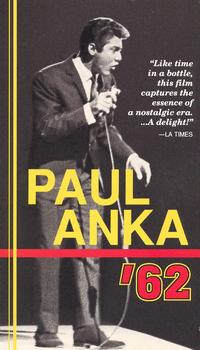Related Research Articles

The National Film Board of Canada is Canada's public film and digital media producer and distributor. An agency of the Government of Canada, the NFB produces and distributes documentary films, animation, web documentaries, and alternative dramas. In total, the NFB has produced over 13,000 productions since its inception, which have won over 5,000 awards. The NFB reports to the Parliament of Canada through the Minister of Canadian Heritage. It has bilingual production programs and branches in English and French, including multicultural-related documentaries.

William Norman McLaren, LL. D. was a Scottish Canadian animator, director and producer known for his work for the National Film Board of Canada (NFB). He was a pioneer in a number of areas of animation and filmmaking, including hand-drawn animation, drawn-on-film animation, visual music, abstract film, pixilation and graphical sound. McLaren was also an artist and printmaker, and explored his interest in dance in his films.
Roman Kroitor was a Canadian filmmaker who was known as a pioneer of Cinéma vérité, as the co-founder of IMAX, and as the creator of the Sandde hand-drawn stereoscopic 3D animation system. He was also the original inspiration for The Force. His prodigious output garnered numerous awards, including two BAFTA Awards, three Cannes Film Festival awards, and two Oscar nominations.

Ryan Larkin was a Canadian animator, artist, and sculptor who rose to fame with the psychedelic Oscar-nominated short Walking (1968) and the acclaimed Street Musique (1972). He was the subject of the Oscar-winning film Ryan.
Colin Archibald Low was a Canadian animation and documentary filmmaker with the National Film Board of Canada (NFB). He was known as a pioneer, one of Canada's most important filmmakers, and was regularly referred to as "the gentleman genius". His numerous honors include five BAFTA awards, eight Cannes Film Festival awards, and six Academy Award nominations.

Lonely Boy is a 1962 Canadian cinéma vérité documentary about the former teen singer Paul Anka. The film takes its name from Anka's hit song, "Lonely Boy", which he performs to screaming fans in the film. This short documentary makes use of hand-held cameras to record intimate backstage moments. It was produced by the National Film Board of Canada and directed by Roman Kroitor and Wolf Koenig.
City of Gold is a 1957 Canadian documentary film by Colin Low and Wolf Koenig, chronicling Dawson City during the Klondike Gold Rush. It made innovative use of archival photos and camera movements to animate still images, while also combining narration and music to bring drama to the whole. Its innovative use of still photography in this manner has been cited by Ken Burns as the source of inspiration for his so-called Ken Burns effect, a type of panning and zooming effect used in video production to animate still images.

The Romance of Transportation in Canada is a 1952 animated short film made by the National Film Board of Canada. Part of the postwar Canada Carries On series, it offers a humorous account of the history of transportation in Canada. The film was directed by Colin Low and produced by Tom Daly.
Ladies and Gentlemen... Mr. Leonard Cohen is a 1965 National Film Board of Canada documentary about Leonard Cohen, co-directed by Don Owen and Donald Brittain, written by Brittain and produced by John Kemeny.

Corral is a 1954 National Film Board of Canada (NFB) short film documentary about the life of a cowboy, directed by Colin Low and produced by Tom Daly. It featured cinematography by Wolf Koenig and a musical score by Eldon Rathburn, and was produced as part of the NFB's postwar Canada Carries On series.
Evelyn Lambart was a Canadian animator and film director with the National Film Board of Canada, known for her independent work, and for her collaborations with Norman McLaren.

Thomas Cullen Daly was a Canadian film producer, film editor and film director, who was the head of Studio B at the National Film Board of Canada (NFB).

Joseph (Joe) Koenig is a Canadian filmmaker and entrepreneur who was the founder and president of Electronics Workbench.
Terence Macartney-Filgate was a British-Canadian film director who directed, wrote, produced or shot more than 100 films in a career spanning more than 50 years.
John Spotton C.S.C. was a Canadian filmmaker with the National Film Board of Canada.
John Kemeny was a Hungarian-Canadian film producer whom the Toronto Star called "the forgotten giant of Canadian film history and...the most successful producer in Canadian history." His production credits include The Apprenticeship of Duddy Kravitz, Atlantic City, and Quest for Fire.
Robert Verrall is a Canadian animator, director and film producer who worked for the National Film Board of Canada (NFB) from 1945 to 1987. Over the course of his career, his films garnered a BAFTA Award, prizes at the Cannes Film Festival and Venice Film Festival, and six Academy Award nominations.
Stanley Jackson (1914-1981) was a Canadian film director, producer, writer and narrator with the National Film Board of Canada (NFB).
The 15th Canadian Film Awards were held on May 10, 1963 to honour achievements in Canadian film.
Jacques Giraldeau (1927-2015) was a Canadian documentary filmmaker from Quebec. He spent most of his career at the National Film Board of Canada and became known primarily for his films about the history of Quebec as seen through the eyes of its artists. He had a fondness for the avant-garde and many of his films are considered to be experimental.
References
- ↑ Lonely Boy, NFB.ca
- 1 2 Stone, Tammy (May 2002). "Candid Eye & Lonely Boy Unit B: Take One's interview with Wolf Koenig". Take One .
- 1 2 3 Martin, Sandra (24 August 2014). "For Wolf Koenig, it was about framing that decisive moment". The Globe and Mail . Retrieved 27 August 2014.
- ↑ Adam Benzine. "Doc pioneer Wolf Koenig passes away". Realscreen. Retrieved 2014-06-29.